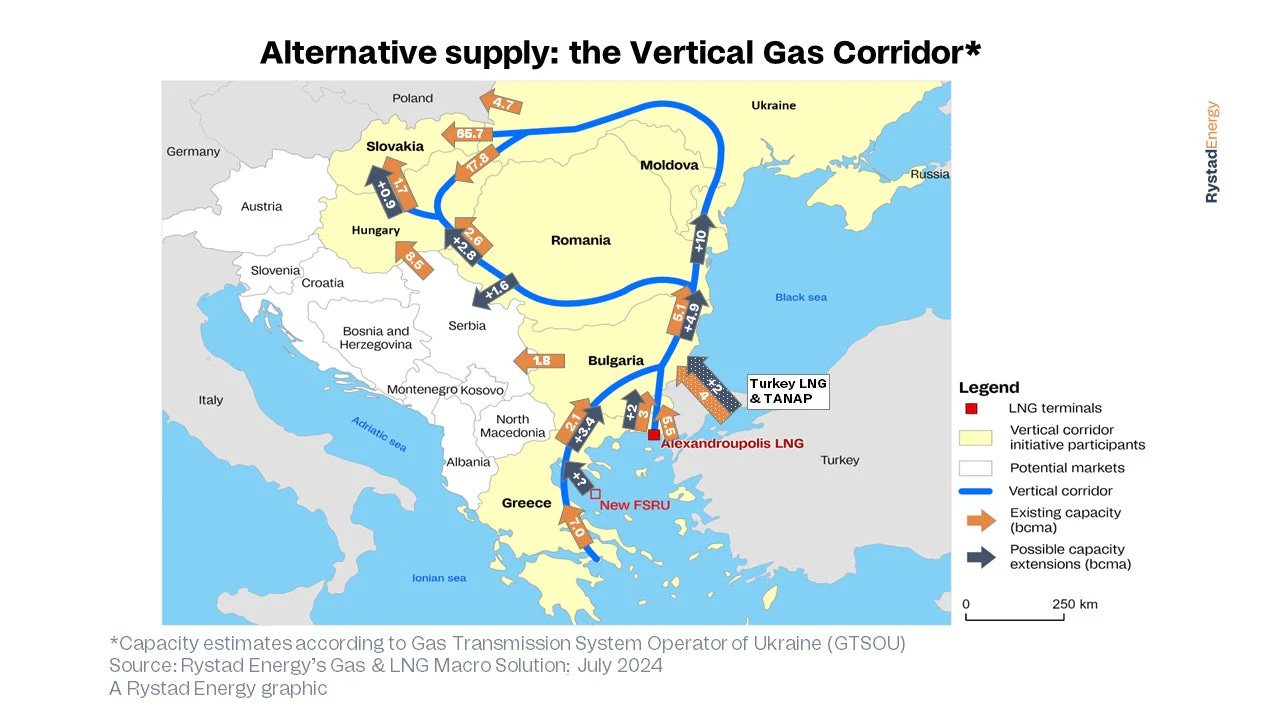Energy, Bitcoin Mining, and Geopolitics: How Power is Shaping the Future
Navigating the Global Energy Crisis and Its Ripple Effects on Cryptocurrency and Strategic Investments
In the wake of the Russia-Ukraine conflict, global energy markets have been thrown into turmoil, dramatically impacting industries that rely on cheap and reliable energy, including Bitcoin mining. As nations and companies shift their strategies, energy remains at the heart of geopolitical power dynamics and business innovation.
1. The Russia-Ukraine Crisis and Its Impact on Energy Markets
Ukraine’s Stand Against Russian Gas
On August 27, 2024, Ukraine declared it would not renew its gas transit contract with Russia, signaling a critical shift in the energy landscape.
This decision effectively blocks Russia’s Gazprom from sending gas through Ukrainian pipelines, a major blow to Russia’s energy dominance in Europe.
Gas transit will halt in 2025, with oil transit set to end in 2029, leaving Russia scrambling for alternative routes and customers.
Gazprom’s Shrinking Reach
With Nord Stream already crippled and Ukraine cutting off its gas routes, Gazprom’s influence over Europe is waning.
Germany, once reliant on Russian gas for over 50% of its supply, has successfully shifted to alternative sources.
Gazprom now relies heavily on pipelines through Turkey, which are insufficient to cover the lost volume.
2. How the Energy Crisis Affects Bitcoin Mining
Energy-Intensive Bitcoin Mining
Bitcoin mining is highly energy-dependent, and disruptions in global energy supplies have a direct impact on the profitability of mining companies.
The Russia-Ukraine crisis has led to rising energy prices across Europe, creating additional cost pressures on miners.
European Miners Under Strain
Bitcoin miners operating in Europe are facing higher electricity costs, reducing their margins and making it harder to remain competitive.
Companies like Bitfarms and Marathon Digital (MARA) have reported mixed production results due to higher network difficulty and increased energy costs.
3. Core Scientific and the Shift Toward Energy-Efficient AI Centers
Diversifying Away from Bitcoin Mining
Core Scientific, a leading Bitcoin mining company, has started converting some of its energy-hungry mining facilities into AI data centers, which offer higher revenue potential.
These AI data centers require significant energy, but the margins are better compared to traditional Bitcoin mining, especially in a world of rising energy costs.
This shift is part of a broader trend where Bitcoin miners are seeking more energy-efficient, diversified revenue streams.
4. The Global Shift Toward Energy Independence
Germany’s Move Away from Russian Gas
Germany, once heavily reliant on Russian gas, has successfully transitioned to alternative energy sources, reducing its dependency and insulating itself from geopolitical shocks.
The use of advanced energy grid management, powered by cutting-edge technology, has allowed Germany to rapidly adjust its energy supply and reduce consumption.
Ukraine’s Strategic Role
With Ukraine’s gas transit shut down, countries like Poland and Bulgaria are considering following suit, cutting off Gazprom’s last few viable pipelines.
This marks a pivotal moment in Europe’s energy independence, as nations increasingly look to diversify away from Russian energy.
5. Strategic Energy Investments in Crypto and Beyond
Tether’s Investment in Agriculture
While Russia and Ukraine battle over energy supplies, companies like Tether are looking at long-term, sustainable assets.
Tether recently invested $102 million in South America’s largest agricultural company, Adecoagro, as part of its strategy to diversify into energy-intensive sectors.
Land and agriculture, like energy, are crucial in times of geopolitical instability, offering both tangible value and long-term security.
6. Bitcoin Mining in a Post-Russia-Ukraine Crisis World
Riot Platforms and Energy Management
Riot Platforms, another major Bitcoin miner, operates in Texas, where energy management is crucial given the grid’s challenges during peak demand.
By employing innovative energy-saving strategies, Riot has managed to keep its operations running efficiently, despite rising energy prices that have hit other miners.
The Long-Term Impact of the Crisis
The Russia-Ukraine crisis has reshaped global energy markets, forcing Bitcoin miners to rethink their energy sourcing and pricing strategies.
As energy prices rise, miners will need to adopt more efficient technologies and diversify into other energy-heavy sectors like AI and agriculture to remain competitive.
Spread the Word
Found this post insightful? Share it with your network and help others understand the evolving dynamics between energy, Bitcoin mining, and global geopolitics. Your share could help more people stay ahead in the rapidly changing energy and cryptocurrency landscape.
Key Takeaways:
Geopolitical Shifts: Ukraine’s decision to cut off Russian gas transit is a major blow to Russia’s energy dominance, accelerating Europe’s move towards energy independence.
Bitcoin Miners and Energy: The energy crisis has forced Bitcoin miners to innovate, adopting energy-saving strategies and exploring new revenue streams like AI computing.
Strategic Investments: Tether’s investment in agriculture reflects a broader trend where companies are looking for stable, long-term assets in response to geopolitical and energy volatility.
Disclaimer:
The information provided by Insight Labs is for educational purposes only. It is not intended to be, and should not be taken as, legal, tax, investment, financial, or any other form of professional advice.






